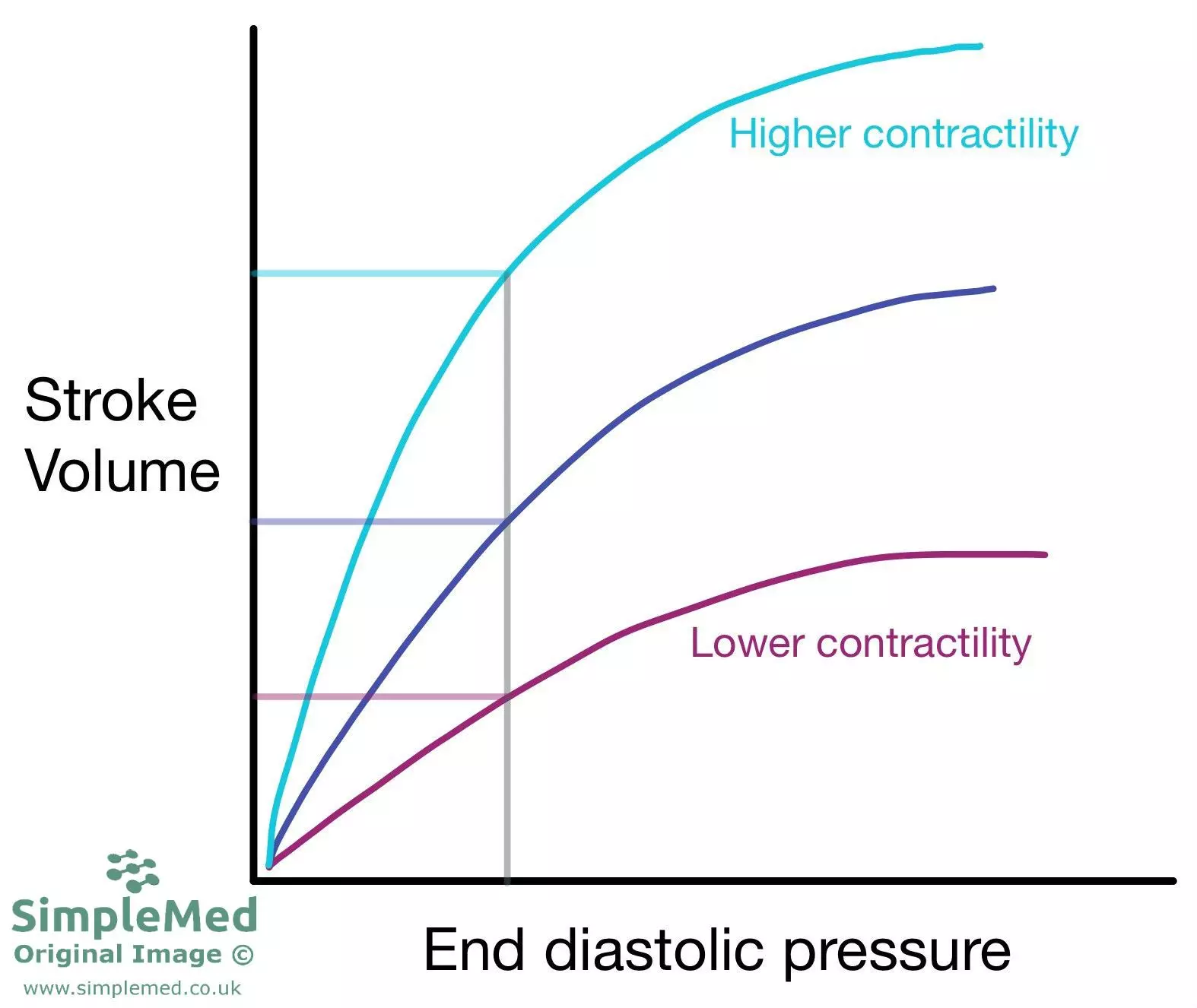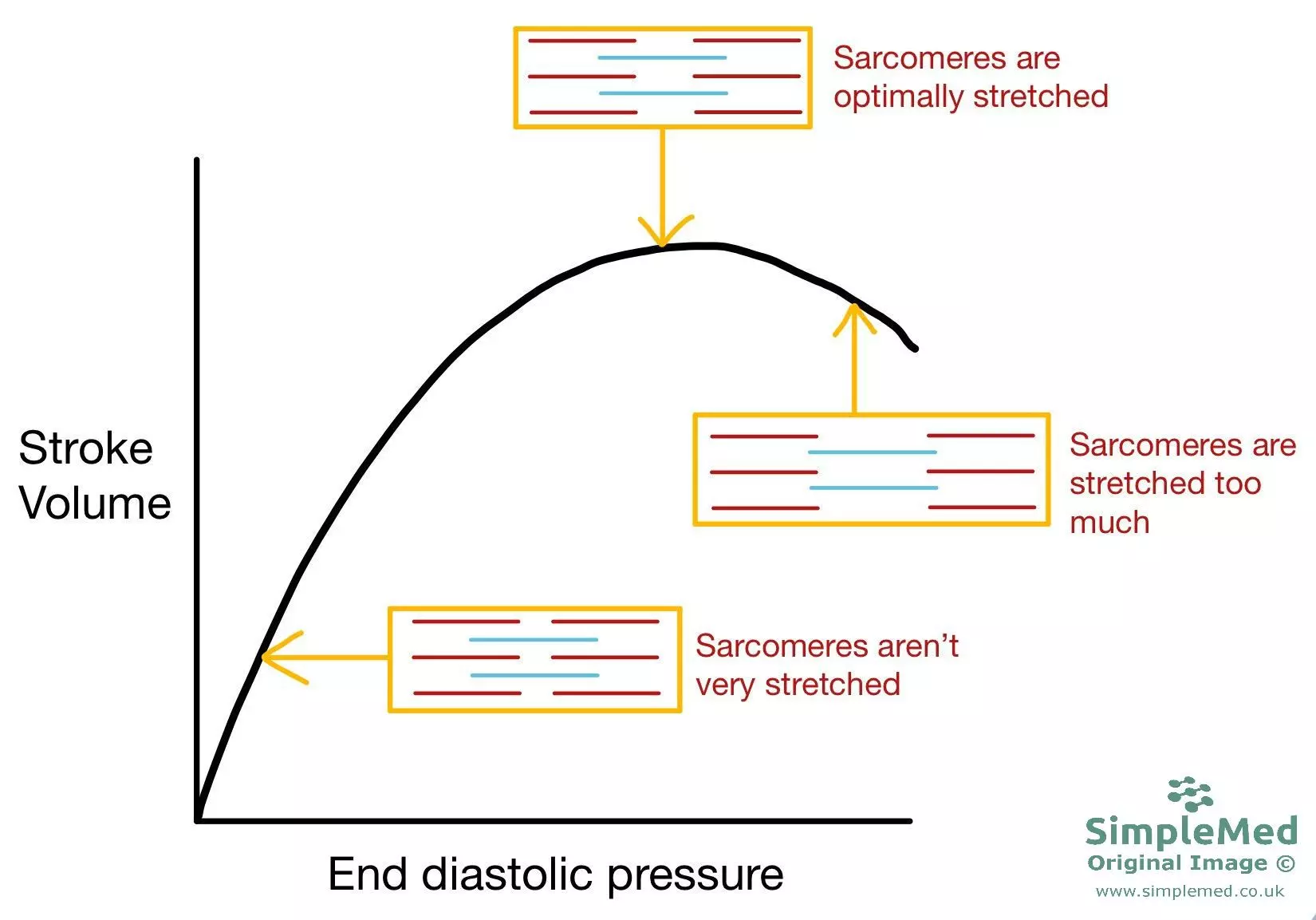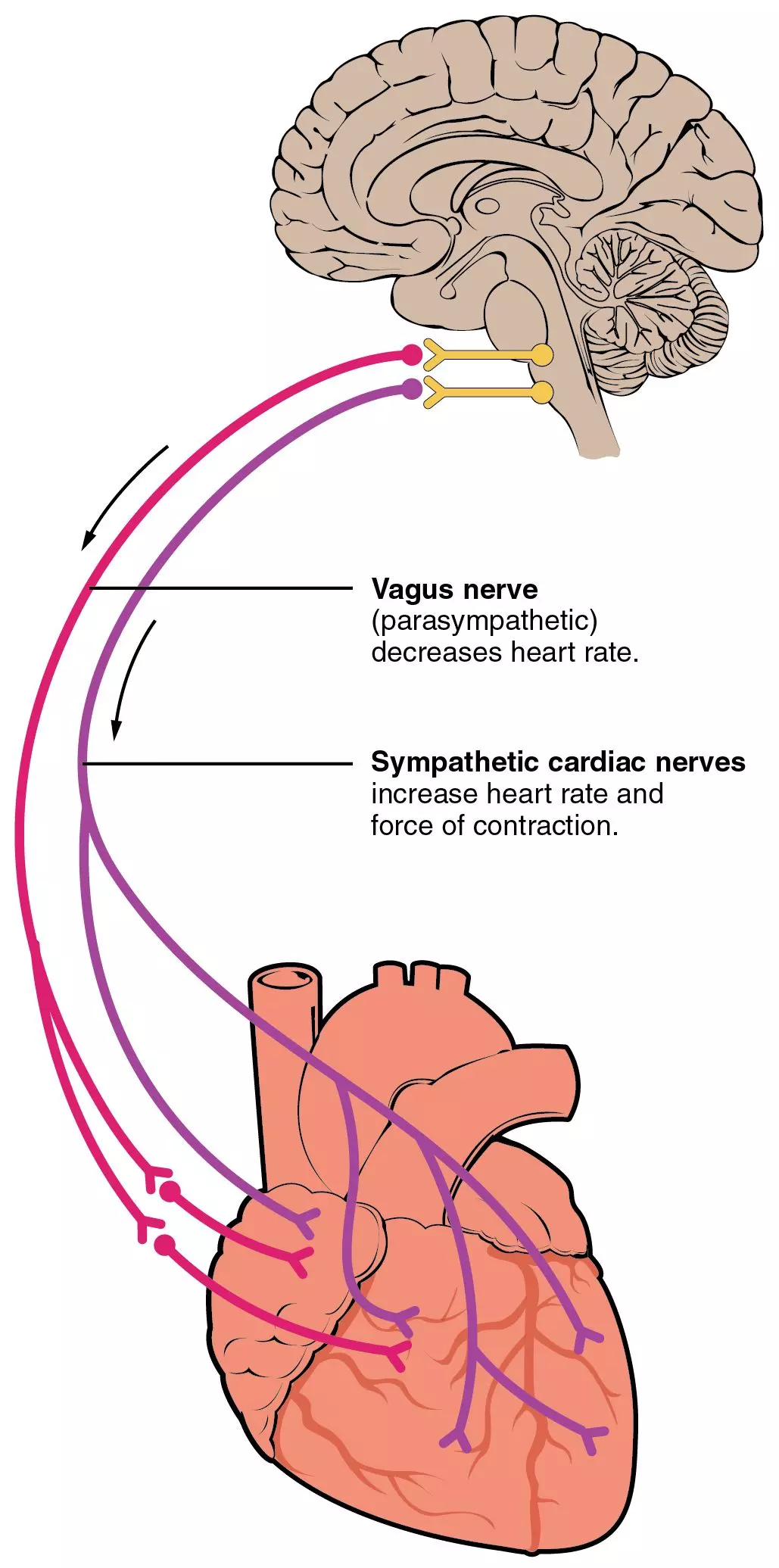By Dr. Thomas Burnell and Bethany Turner
Questions by Dr. Jenny Hubball
Next Lesson - Cardiac Conduction and Contraction
Abstract
- Cardiac output changes constantly throughout the day in order to maintain blood pressure in response to changes in total peripheral resistance, afterload and preload.
- The baroreceptors measure BP and send signals to the cardiac centre of the medulla to mediate changes in BP via the autonomic nervous system.
- The autonomic nervous system controls the heart rate, force of contraction and total peripheral resistance.
Core
The heart must change its output (cardiac output = CO) if there is a change in total peripheral resistance (TPR) in order to maintain blood pressure (BP).
Mean arterial BP = TPR x CO
For example, when metabolism in the muscles increases during exercise, blood vessels dilate to supply muscles with more blood. This causes a fall in TPR which leads to a fall in arterial pressure (as per the above equation). The heart responds by increasing the cardiac output to raise the BP.
CO = stroke volume x heart rate
The above equation shows how CO is calculated to be able to calculate mean arterial BP.
- Stroke Volume (SV) – determined by:
- The Afterload – the blood/pressure that the ventricles pump against.
- The Preload – the amount that the ventricles fill in diastole.
- Heart Rate (HR) – determined by:
- The autonomic nervous system (ANS).
The Frank-Starling law states that the more the heart fills and is stretched, the harder it contracts. This leads to a greater stroke volume.
There is a relationship between the end diastolic volume (EDV) and the SV, with the greater the EDV, the greater the SV. EDV is equivalent to end diastolic pressure (EDP) as greater pressure leads to greater filling of the ventricles.

Diagram - How the stroke volume changes with the end diastolic pressure
SimpleMed original by Bethany Turner
Heart contractility can be altered by stimulation from the sympathetic nervous system stimulation. This causes the ventricles to pump harder, leading to an increased SV at a given EDV (as seen in the diagram above).
As the heart fills the sarcomeres of the myocardium stretch, and this leads to them contracting more forcefully during systole. This applies so long as the ventricles do not stretch too much or else the filaments are no longer touching so cannot contract.

Diagram - The Frank Starling Curve showing how the stroke volume changes with the stretching of sarcomeres
SimpleMed original by Bethany Turner
Autonomic Control of the Heart
The autonomic nervous system is important for many physiological functions and for control of the body systems. In the CVS it controls the heart rate, force of contraction, and peripheral resistance of blood vessels.
The parasympathetic nervous system (PNS) control of the heart is via the Vagus nerve. The Vagus has pre-ganglionic fibres which synapse with the post-ganglionic fibres on the epicardial surface, or within heart walls at the SA and AV node. The post-ganglionics release Acetylcholine (ACh) which acts on M2-receptors causing a negative chronotropic effect (slowing of the heart rate).
- PNS causes a negatve chronotropic effect by decreasing the slope of the pacemaker potential. It does this by increasing potassium ion conductance and decreasing cAMP.
The sympathetic nervous system (SNS) control of the heart is via post-ganglionic fibres from the sympathetic trunk. It innervates the SA node, AV node and myocardium. The post-ganglionics release noradrenaline (NA) which acts on β1-adrenoreceptors, causing a positive chronotropic (the heart beats faster) and positive inotropic effect (heart beats with more force).
- The SNS increases the slope of the pacemaker potential by increasing the cAMP within cells. This opens more hyperpolarisation-activated cyclic nucleotide-gated Na+ channels hence speeding up the pacemaker potential. This has a positive chronotropic effect.
- cAMP activates PKA which in turn phosphorylates Ca2+ channels. This increases Ca2+ ion entry into the cell. This increases the Ca2+ ion uptake into the sarcoplasmic reticulum causing a positive inotropic effect.
- The SNS speeds up the relaxation of the heart, shortening diastole. This reduces the time of one cardiac cycle, therefore increasing heart rate.

Diagram - The innervation to the heart and the effects it has on the heart
Creative commons source by OpenStax College [CC BY 3.0 (https://creativecommons.org/licenses/by/3.0)]
Autonomic Control of Vasculature
The ANS constantly releases NA at low levels to cause a small amount of vasocontraction of blood vessels. This is the normal vasomotor tone of the blood vessels. This slight sympathetic activity allows the blood vessels to contract or dilate depending on the needs of the tissue by increasing or decreasing the level of NA. The NA acts on α1-adrenoreceptors present on most arteries and veins to cause some vasoconstriction to maintain the vasomotor tone.
- NA binds to α1-adrenoreceptors which results in the production of IP3, causing release of Ca2+ ions from the SR.
- Four Ca2+ ions complex with one calmodulin molecule (CaM) and this complex then goes on to activate myosin light chain kinase (MLCK).
- MLCK activates the myosin II head in the vascular smooth muscle to allow for muscle contraction, and therefore vasoconstriction.
- DAG released from the binding of NA to the α1-adrenoreceptor activates protein kinase C (PKC).
- PKC inactivates myosin light chain phosphatase which would otherwise inhibit the action of MLCK and prevent vasoconstriction. This allows the contraction to be sustained.
The vasculature of the heart, skeletal muscle and liver have β2 receptors as well as α1. At physiological levels, adrenaline has a higher affinity for β2 -receptors than for α1-receptors which results in vasodilation. This maintains blood supply to these organs when there is high activity in the SNS and your fight-or-flight response is active.
At pharmacological levels, adrenaline preferentially binds to α1-receptors to cause vasoconstriction. This is important in conditions like anaphylaxis where TPR has fallen dramatically and the patient is hypotensive. The injection of adrenaline into a patient with an epi-pen causes vasoconstriction of these blood vessels to maintain blood pressure.
Baroreceptors are located in the aortic arch and carotid sinus (located at the bifurcation of the common carotid arteries).
When blood pressure is increased, the baroreceptor nerve endings are stretched which increases their activity. This information is sent to the medullary control centre in the brainstem, which sends out a signal via the ANS to decrease heart rate and contractility, therefore decreasing BP.
Baroreceptors can be set to a higher tolerance level if the BP is elevated for a long time. This is important in hypertension as it means the body does not try to lower the BP as the baroreceptors have reset to a higher tolerance than before and will no longer fire at the higher BP.
Edited by: Dr. Ben Appleby
- 21245

